(English text below)
S 54°58.521′ – Fin del Mundo…wir sind am 18.11.19 am Ende der Welt angelangt. Südlicher kann man nicht mehr fahren. Dass wir dort unbedingt zelten mussten, war klar und wir fanden ein kleines Stück nördlicher auf S 54° 56.493’ einen passenden Platz an dem wir unser südlichstes Nachtlager ever aufschlugen. Wir genossen den Moment sehr und waren ganz Jungs: Wir warfen große Steine von der Klippe ins Wasser und versuchten dabei herausstehende Felsen zu treffen, starrten ewig auf die raue See ohne ein Wort zu wechseln und nachdem Marco noch im eiskalten Meer, wo sich Atlantik und Pazifik treffen, ein Bad genommen hat, genossen wir ein Bier und dazu eine dicke kubanische Zigarre um dann bei einbrechender Dunkelheit noch ein Lagerfeuer zu entzünden…unvergessliche Momente fürs Leben!
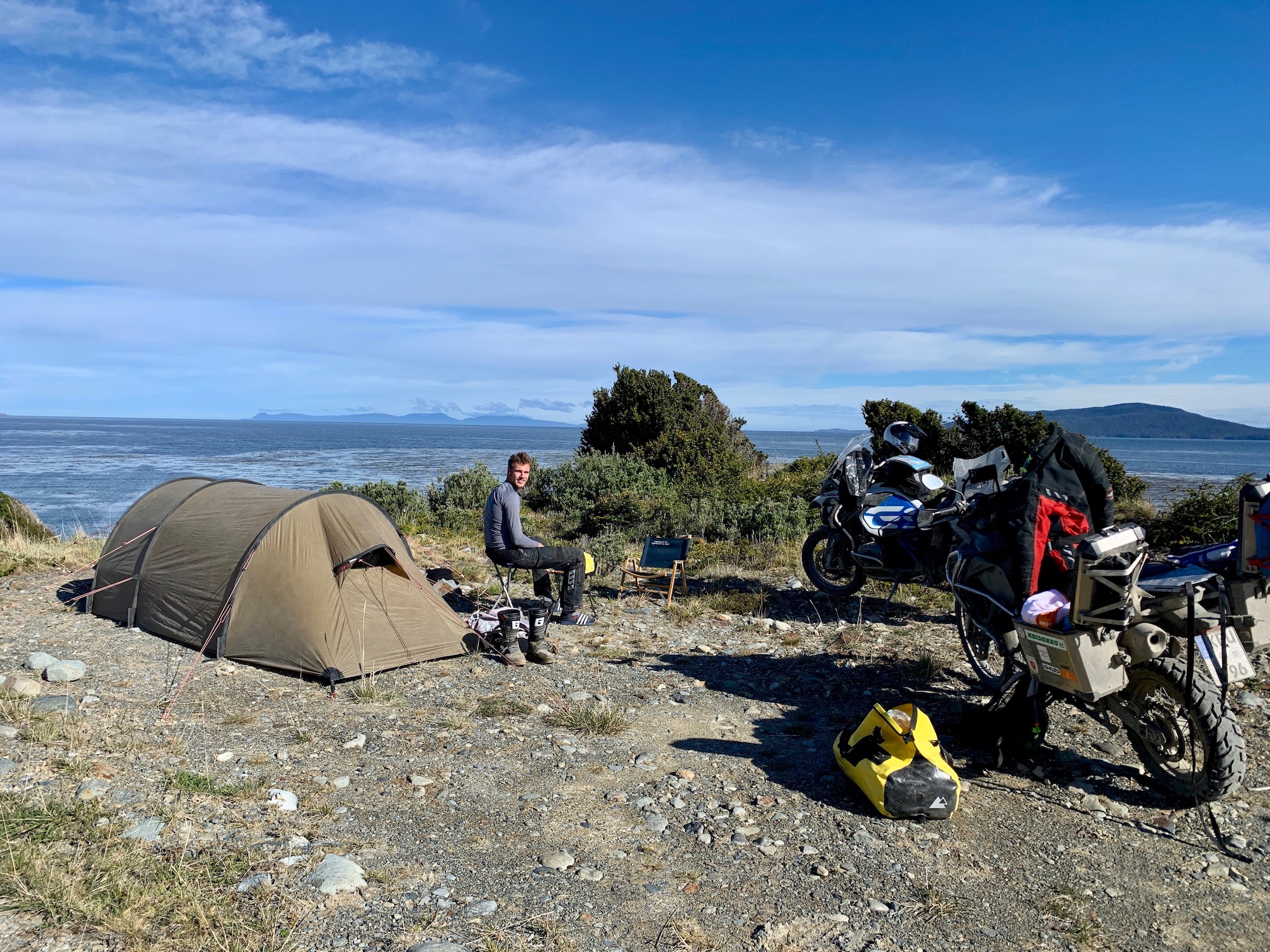
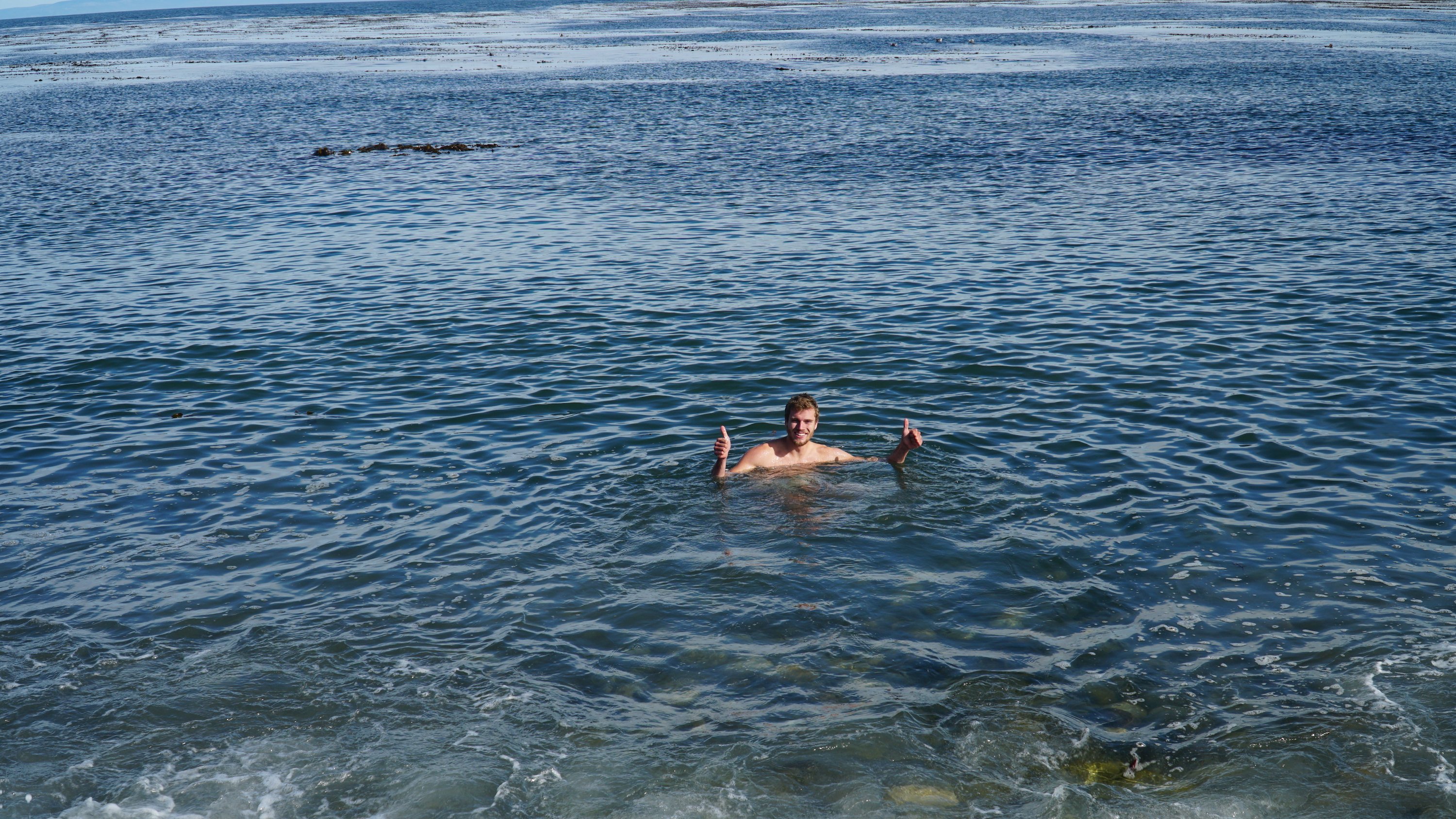

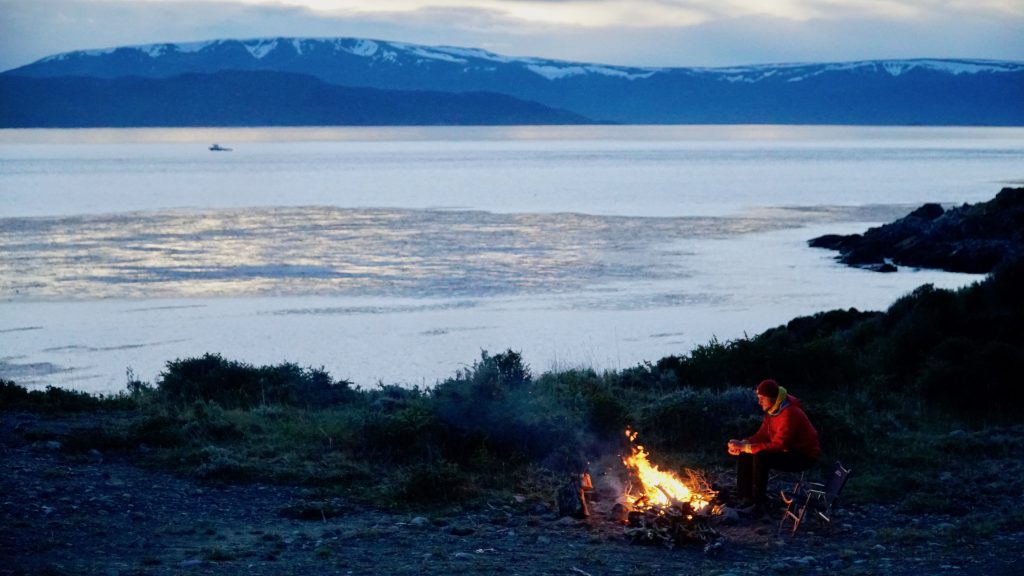
Für mich war dieser Platz auch ein Wendepunkt meiner Reise. Die letzten siebeneinhalb Monate war meine Hauptrichtung immer gen Süden, nun werde ich für die nächsten Monate in entgegengesetzter Richtung unterwegs sein. Wenn mein Plan aufgeht, werden es rund acht Monate und vielleicht weitere 30’- 40’t km sein, bis ich Prudhoe Bay in Alaska erreiche.
Drei Tage verbrachten wir zuvor in Ushuaia, das wir bei Regen und eisigem Wind am Donnerstag Abend erreichten. Da wir kein bezahlbares Zimmer finden konnten und die Gemeinde-Campingplätze geschlossen waren, übernachteten wir ein paar Kilometer außerhalb an einem Fluss. Die vierte Nacht hintereinander im Zelt ohne Dusche.
Ushuai, die offiziell südlichste Stadt der Welt mit ihren rund 70.000 Einwohnern liegt in einer traumhaften Bucht am Beagle Kanal, eingeschlossen vom rauen Südatlantik auf der einen und von steil aufragenden, teils noch verschneiten Bergen auf der anderen Seite.

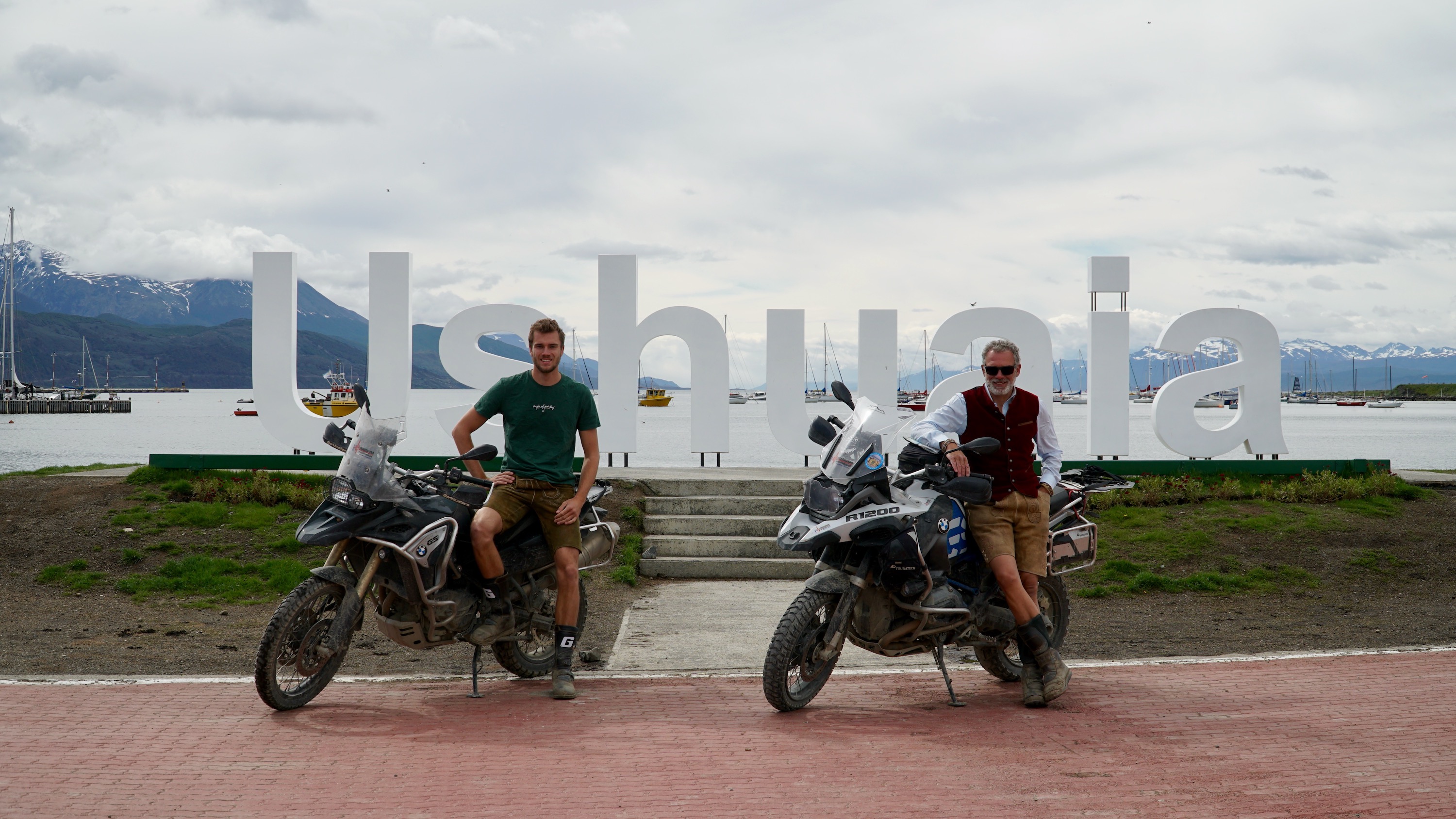
Eine nette Stadt, sauber und mit noch einigen alten Gebäuden, jedoch von Touristen aus aller Welt überlaufen, obwohl wir Mitte November, kurz vor der beginnenden Saison dort waren. Wir nutzten die Zeit hier vor allem um uns und unsere Ausrüstung wieder auf Vordermann zu bringen, vor allem musste das Zelt mal gewaschen und die Reißverschlüsse gepflegt werden und auch sonstige Ausrüstung hatte Pflege und Check nötig. Zudem haben wir uns mit Angelika und Gerd getroffen, die vier Wochen durch Chile und Argentinien gereist sind. Bereits zum dritten mal, dass ich nun auf meiner Reise jemand aus der Heimat treffen konnte.

Auf unserem Weg von Cordoba aus ans Ende der Welt haben wir einen Abstecher auf die Halbinsel Valdés gemacht und dort die raue Landschaft und die Tierwelt genossen. Einen Tag erkundeten wir ohne Gepäck die komplette Insel und sahen neben den allgegenwärtigen Guanacos, bis zu 5 m große Seeelefanten, Robben, Pinguine und diverse Vögel. Marco sah bei einer Bootstour noch einige Wale. Muttertiere, die mit ihren nun schon ziemlich großen Kälbern ganz nah ans Boot kamen und so den Beobachtern spektakuläre und unvergessliche Momente schenkten.

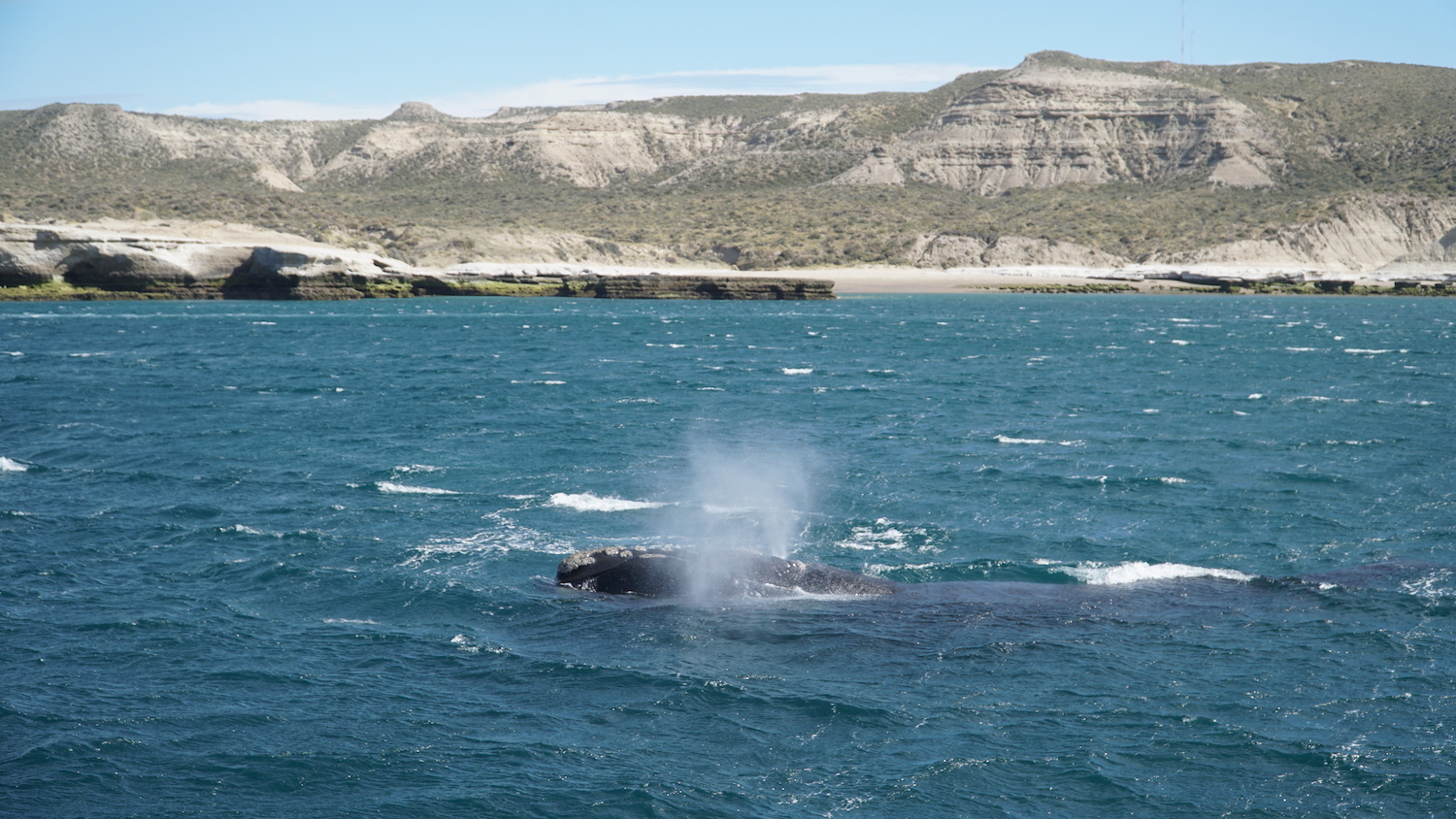
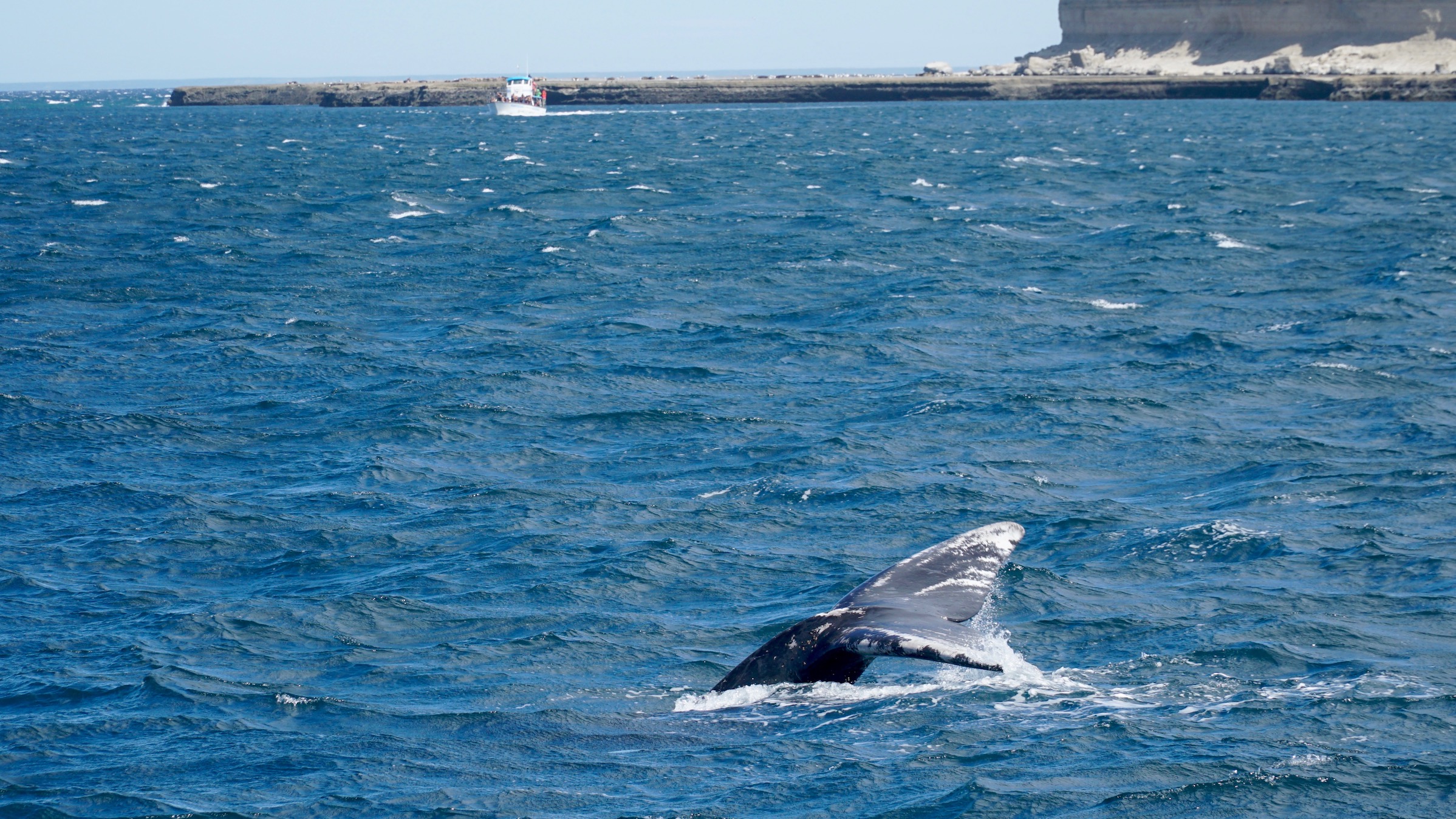
Am Samstag verließen wir die Halbinsel um im nahegelegenen Puerto Madryn noch eine Nacht auf einem Bikertreffen zu verbringen. Hierzu wurden wir ein paar Tage vorher von Mitgliedern der „Quijotes del Camino“ aus Azul eingeladen, die wir bei einem Tankstopp auf der Strecke kennen gelernt hatten. Das Treffen war nicht allzu groß, jedoch waren die unterschiedlichsten Motorräder, die meist deutlich kleiner sind als in Europa, eine Schau und wir hatten viel Spaß an diesem feucht-fröhlichen Abend…incl. des in Argentinien sehr populären Fernet-Cola, der auf dem Treffen ausschließlich im 1-Liter-Gebinde serviert wurde..welch ein Graus für meine Ramazzotti-Verwöhnten Geschmacksnerven…
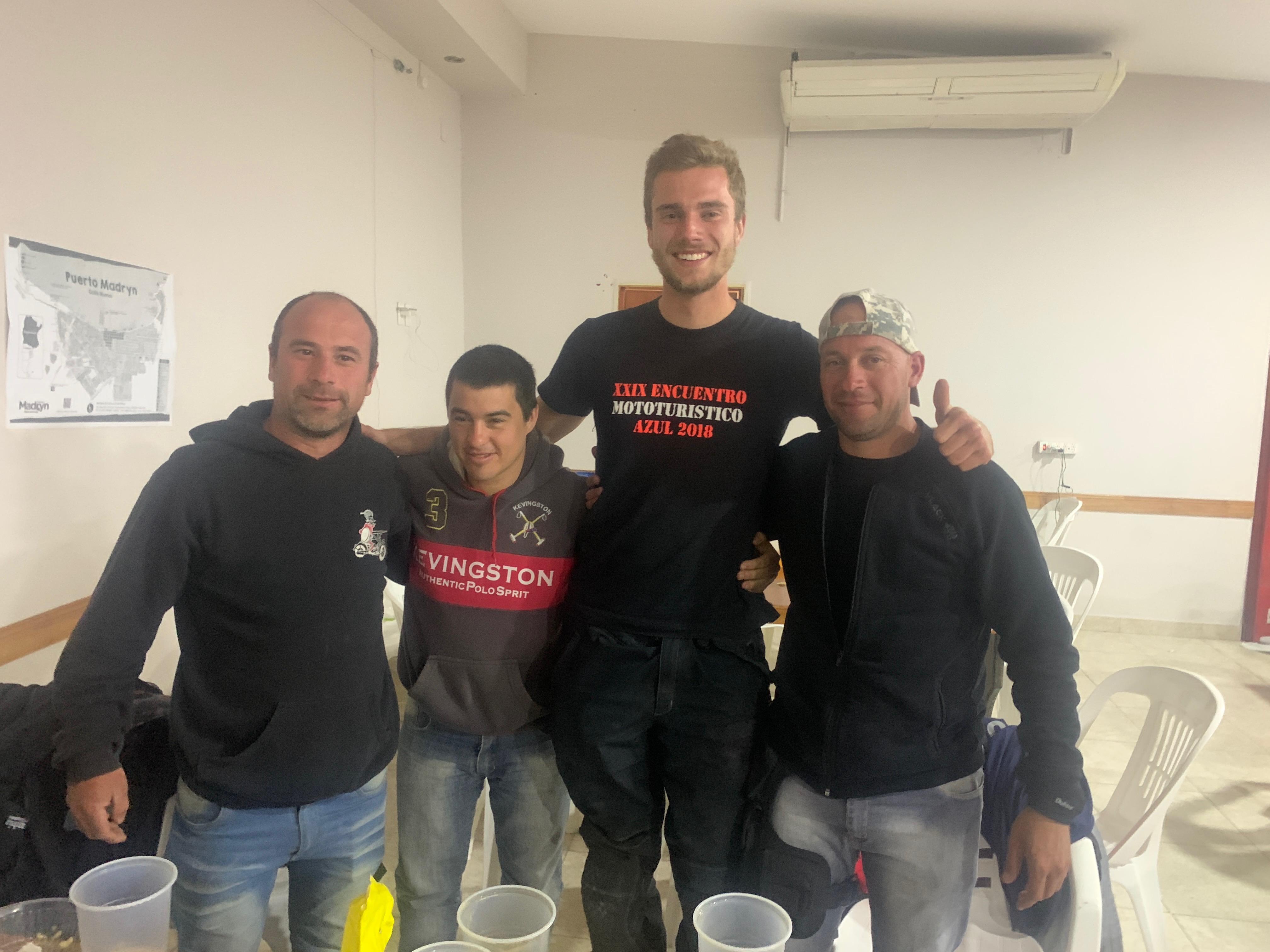
Dann ging es an der Küste entlang auf der berühmten und meist bis zum Horizont geraden Ruta 3 in den Süden. Wir besuchten noch Punta Tombo, wo es die weltweit größte Pinguin Kolonie gibt. Vor ein paar Jahren wurden hier über 200.000 brütende Paare gezählt.

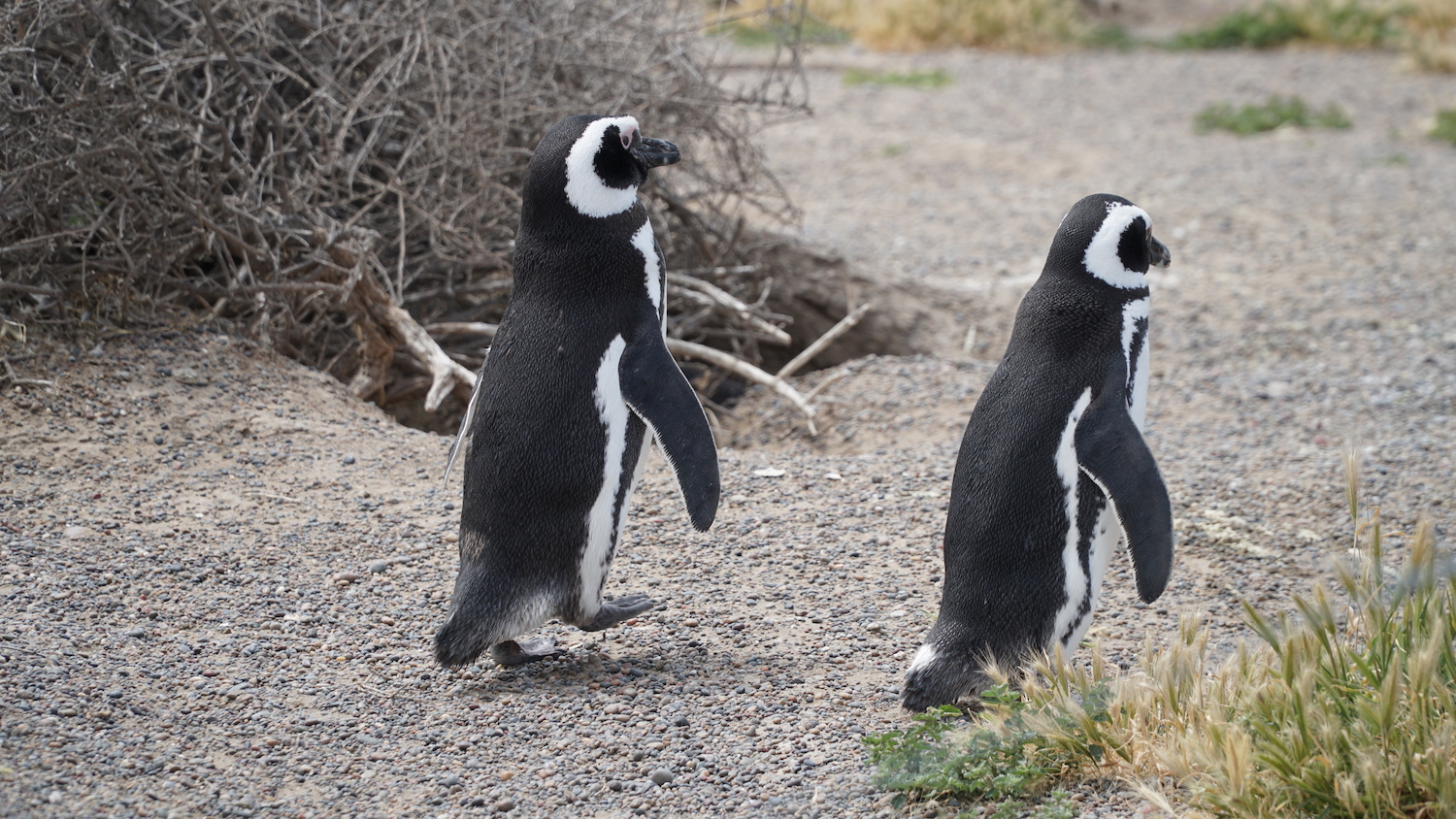
Nachdem im Norden Argentiniens an der flachen Küste entlang Rinderzucht dominierte, in den Bergen Brasiliens Wein-/Getreideanbau und in Paraguay die riesigen Soja-Felder unübersehbar waren, gab es auf dem Weg in den Süden vor allem eines: Nada – Nichts.
Die niedrigen Bäume wurden zu Sträuchern, diese zu Büschen bevor dann außer Pampa nichts mehr war. Erst auf Feuerland, südlich von Rio Grande sahen wir wieder Bäume, denen man die Naturgewalten hier allerdings ansah.
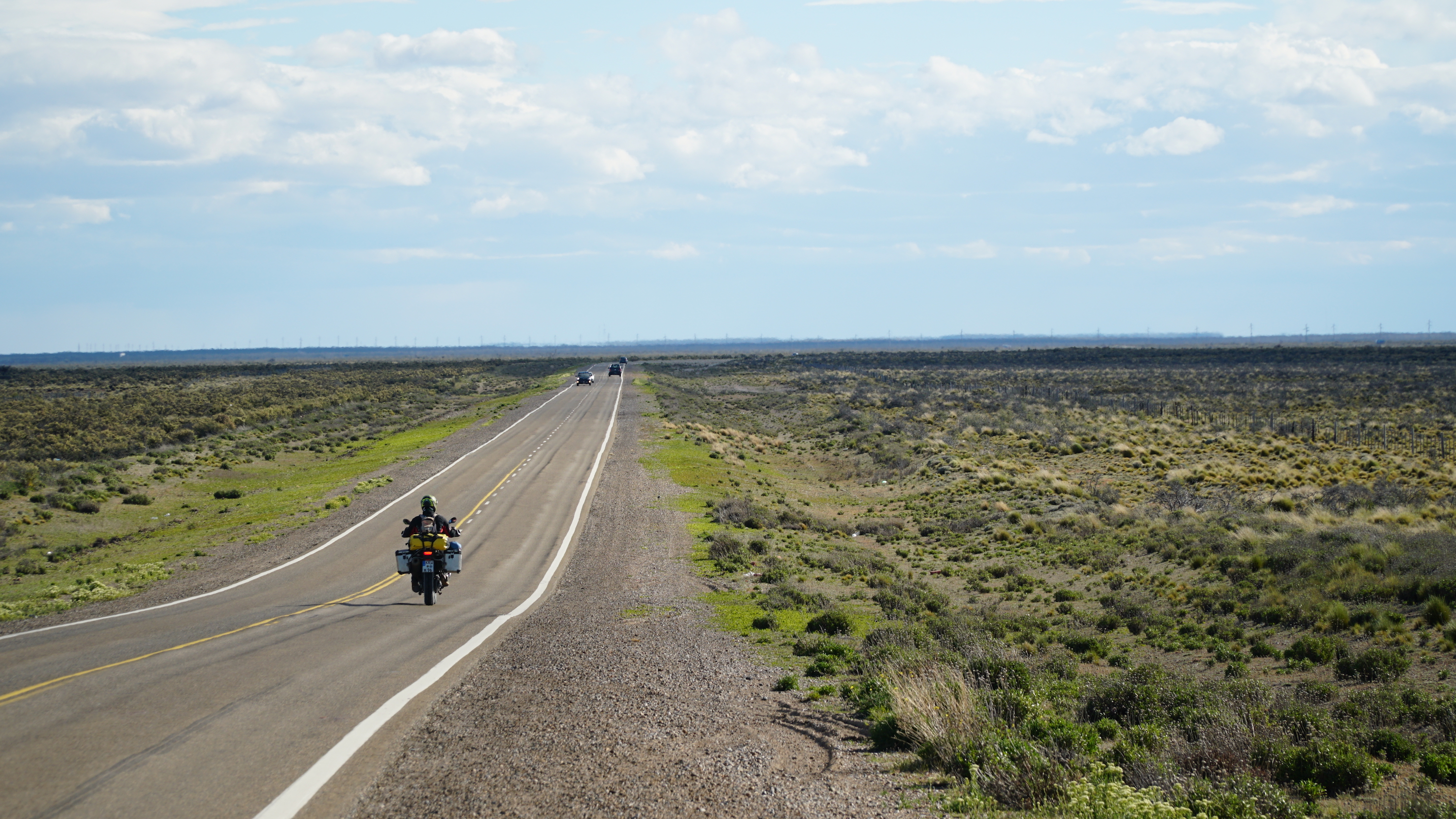
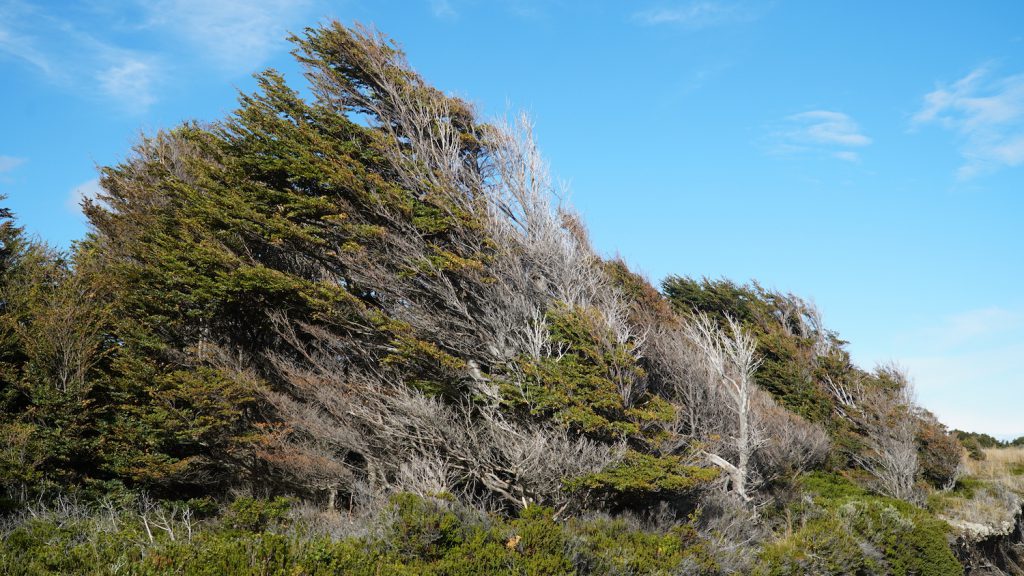

Was hier unten fast immer herrscht ist strammer Wind. Der für diese Breiten typische Westwind rührt daher, dass es auf der südlichen Halbkugel viel weniger Landmasse gibt, die eben diese Winde „abbremsen“ könnte, im Gegensatz zur nördlichen Halbkugel. Die Segler der Entdeckerzeit gaben den Breitengraden daher die Namen „roaring forties“ und „furious fifties“
Zu Verdeutlichung: Ushuai im Süden liegt fast auf dem selben Breitengrad wie Flensburg im Norden.
Mittlerweile haben wir Feuerland via Fähre über die Straße von Magellan nach Punta Arenas wieder verlassen und befinden uns inmitten der gigantischen Anden im Süden Argentiniens…doch dazu später mehr…

S 54°58.521′ – Fin del Mundo…on the 18.11.2019, the 230th day of my journey, we reached the end of the world. You can’t drive any further south. It was clear that we had to camp there and a little further north at S 54° 56.493′ we found a suitable place to pitch our southernmost camp ever. We enjoyed the moment a lot and were being boys: We threw big stones from the cliff into the water and tried to hit rocks standing out, stared at the rough sea for a long time without chatting a word and after Marco took a bath in the ice-cold sea, where Atlanic and Pacific Ozean meet, we enjoyed a beer and a thick Cuban cigar to later light a campfire at nightfall…unforgettable moments for life!
For me this place was also a turning point of my journey. For the last seven and a half months my main direction has always been south, now I will be heading in the opposite direction for the next few months. If my plan works out, it will be about eight months and maybe another 30′-40’t km until I reach Prudhoe Bay in Alaska.
We spent three days in Ushuaia, which we reached in rainy and windy conditions on Thursday evening. Since we couldn’t find an affordable room and the community campsites were all closed, we spent the night a few kilometres outside the city at a little river. The fourth night in a row in a tent without shower.
Ushuai, the officially southernmost city in the world with about 70,000 inhabitants, is situated in a dreamlike bay at the Beagle Channel, enclosed by the rough South Atlantic on one side and by steeply rising, partly still snow-covered mountains on the other.
A nice city, clean and with some old buildings, but really crowded by tourists from all over the world, although we were there in the middle of November, shortly before the beginning of the season. We used the time here mainly to get ourselves and our equipment back in shape, especially the tent had to be washed and the zippers had to be maintained and other equipment needed care and check. We also met Angelika and Gerd, who travelled through Chile and Argentina for four weeks. That was already the third time that I could meet someone from back home on my trip.
On our way from Cordoba to the end of the world we made a detour to the Peninsula Valdés and there we enjoyed the rough landscape and the fauna. One day we explored the complete island without luggage and saw the omnipresent guanacos, sea elephants up to 5 m large, seals, penguins and various birds. Marco saw some more whales during a boat trip. Mother animals who came very close to the boat with their calves, which were already quite big, and thus gave the observers spectacular and unforgettable moments.
On Saturday we left the peninsula to spend another night at a biker meeting in nearby Puerto Madryn. For this we were invited a few days before by members of the “Quijotes del Camino” from Azul, whom we had met during a refueling stop on the route. The meeting was not too big, but the most different motorcycles, which are mostly much smaller than in Europe, were a show and we had a lot of fun on this liquid and cheerful evening… inclusive some of the in Argentina very popular beverage Fernet Cola, which was served on the meeting exclusively in 1 litre cups… what a horror for my Ramazzotti spoiled taste nerves…
Then we headed south along the coast on the famous and mostly completely straight Ruta 3. We visited Punta Tombo, home to the world’s largest penguin colony. A few years ago, over 200,000 breeding pairs were counted here.
After cattle breeding dominated in the north of Argentina along the flat coast, in the mountains of Brazil’s wine- and grain-growing was the most popular and in Paragay the huge soy fields were unmissable, on the way south there was mainly one thing: Nada – nothing.
The low trees turned into shrubs, these turned into bushes before nothing but pampa was left. It was in Tierra del Fuego, south of Rio Grande, where we saw the first trees again, unmistakably formed by natures forces.
What almost always prevails down here is a strong wind. The west wind typical for these latitudes stems from the fact that there are much less land masses in the southern hemisphere that could “slow down” these very winds, in contrast to the northern hemisphere. The sailors of the time of discovery therefore gave these latitudes the names “roaring forties” and “furious fifties”.
For clarification: Ushuai in the south lies almost on the same latitude as Flensburg in the north.
Meanwhile we have left Tierra del Fuego by ferry crossing the Magellan Strait to Punta Arenas and are in the middle of the gigantic Andes in southern Argentina…but more about that later…
Copyright © Armin Thalhofer


Wieder ein toller Bericht. Der etwas längere Bart steht Dir ausgezeichnet.
Beste Grüße,
Valle
Nothing can be as good as participating on this trip with you through all reports. I finally found good pictures of Marco, who I wanted to meet in Garmisch, but at the end it was impossible for us to meet.
Hope you are enjoying. We are definitely enjoying the reports. May the continuation be even better for you than the trip has been until now.
A part of what I wrote above wasn’t published for some reason. I wrote “it was good to see a good picture of Marco, who I wanted to meet in Garmisch but the weather did not allow it”.
Glückwunsch!!! Well done!
Hallo Ihr beiden
Schön, von euch zu hören. Und man könnte meinen, dass die anfänglichen “Probleme” sich in Wohlgefallen aufgelöst haben!?
Deine Bilder sind wunderschön anzuschauen – sowohl Fauna und Flora, als auch euch beide zu sehen-Bart steht dir gut, Armin!
Freu mich auf den nächsten Bericht und schick euch adventliche Grüße aus dem nass kalten München!
Assi
Wieder ein traumhaftes Stückchen weiter!!!